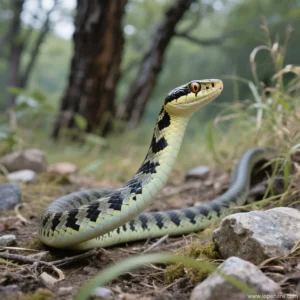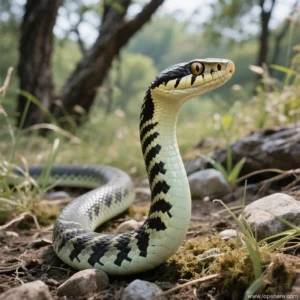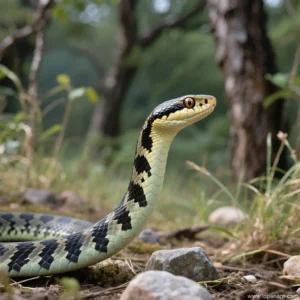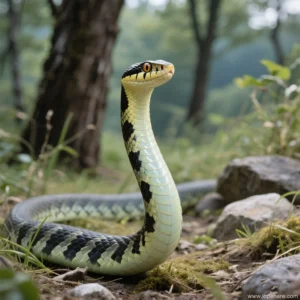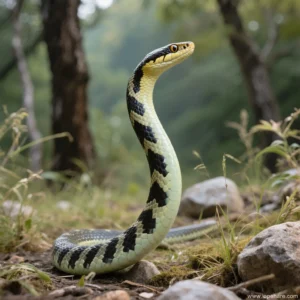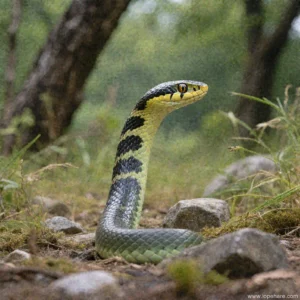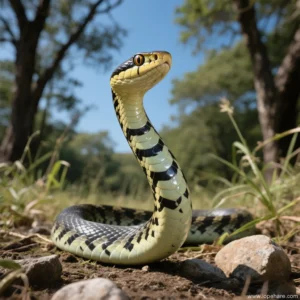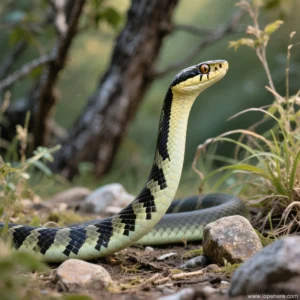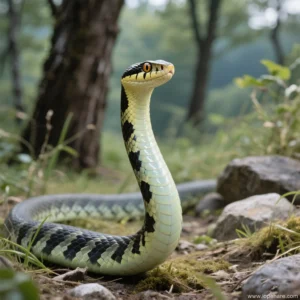Reptile Breeding
Breeding Elaphe schrenckii: Ethics, Challenges, and Preparations for Pet Breeders
Introduction: Why Breed Elaphe Schrenckii?
As editors at lopehare, we understand the fascination with niche pets. The Siberian Rat Snake, *Elaphe schrenckii*, with its striking black and yellow banding, is a truly captivating species gaining popularity among reptile enthusiasts. While primarily known for their docile temperament and relatively straightforward care compared to some other snakes, breeding them presents a unique set of responsibilities and challenges. Undertaking the responsible breeding practices for Siberian Rat Snakes requires careful planning, a deep understanding of the species’ needs, and a commitment to the welfare of both the parent animals and their potential offspring. This guide aims to explore the ethical considerations, necessary preparations, and potential hurdles involved for pet breeders looking to successfully breed *Elaphe schrenckii*.
Ethical Considerations in Breeding
Before even considering pairing your snakes, it’s crucial to address the ethical implications. Breeding pets, including reptiles, is not a decision to be taken lightly. You are responsible for every animal produced. Key ethical points include:
- Purpose: Are you breeding to improve the species’ genetics, produce healthy animals for the pet trade, or simply because you can? Ethical breeding focuses on producing healthy, well-adjusted animals that will find responsible, permanent homes. Avoid breeding simply to sell or for casual experimentation.
- Genetic Health: Ensure your breeding stock is healthy, unrelated, and free from genetic defects. Understanding the lineage of your animals is vital.
- Capacity to Care: Do you have the resources (space, time, finances, knowledge) to care for potentially dozens of hatchlings for several months, or even longer if they don’t sell quickly? This includes proper housing, feeding, and veterinary care for *all* hatchlings.
- Finding Homes: Have you researched the market and potential buyers? Is there demand for *Elaphe schrenckii* hatchlings in your area? Do you have a plan for vetting potential buyers to ensure your hatchlings go to suitable homes?
Responsible Breeder Pledge: Ethical breeders prioritize the health and welfare of their animals above all else. This means sometimes deciding NOT to breed if conditions aren’t perfect or if you can’t guarantee homes for the offspring.
Preparation is Key: Environment and Stock
Successful breeding starts long before pairing. Both male and female snakes must be mature, healthy, and in optimal condition. For *Elaphe schrenckii*, this typically means males are at least 2-3 years old and females 3-4 years old, both with adequate body weight. A critical part of preparation involves replicating the natural cycle to encourage breeding behavior.
- Brumation: Like many temperate zone snakes, *Elaphe schrenckii* often requires a period of brumation (a state of dormancy similar to hibernation) to stimulate breeding readiness. This involves gradually reducing temperatures over several weeks to around 40-50°F (4-10°C) for 2-3 months, after which temperatures are slowly increased. Proper brumation protocols are essential for health and breeding success.
- Conditioning: After brumation, provide ample food to get the snakes back into peak physical condition. A well-fed female is more likely to produce healthy eggs and have the energy reserves needed for breeding.
- Breeding Enclosures: While pairing, ensure the enclosure is large enough for both animals to move comfortably and has multiple hides to allow separation if needed.
Brumation Risks: Incorrect brumation (snakes not properly fasted, temperatures fluctuating wildly, dehydration) can be dangerous or even fatal. Research species-specific brumation requirements thoroughly before attempting it.
Navigating the Breeding Process
After conditioning, the snakes can be introduced. Observing their behavior is key.
Typically, the male is introduced to the female’s enclosure. Courtship involves the male trailing the female, twitching his body. Copulation can last from minutes to hours and may occur multiple times over several days or weeks. Monitor the pair closely. If aggression occurs, separate them immediately.
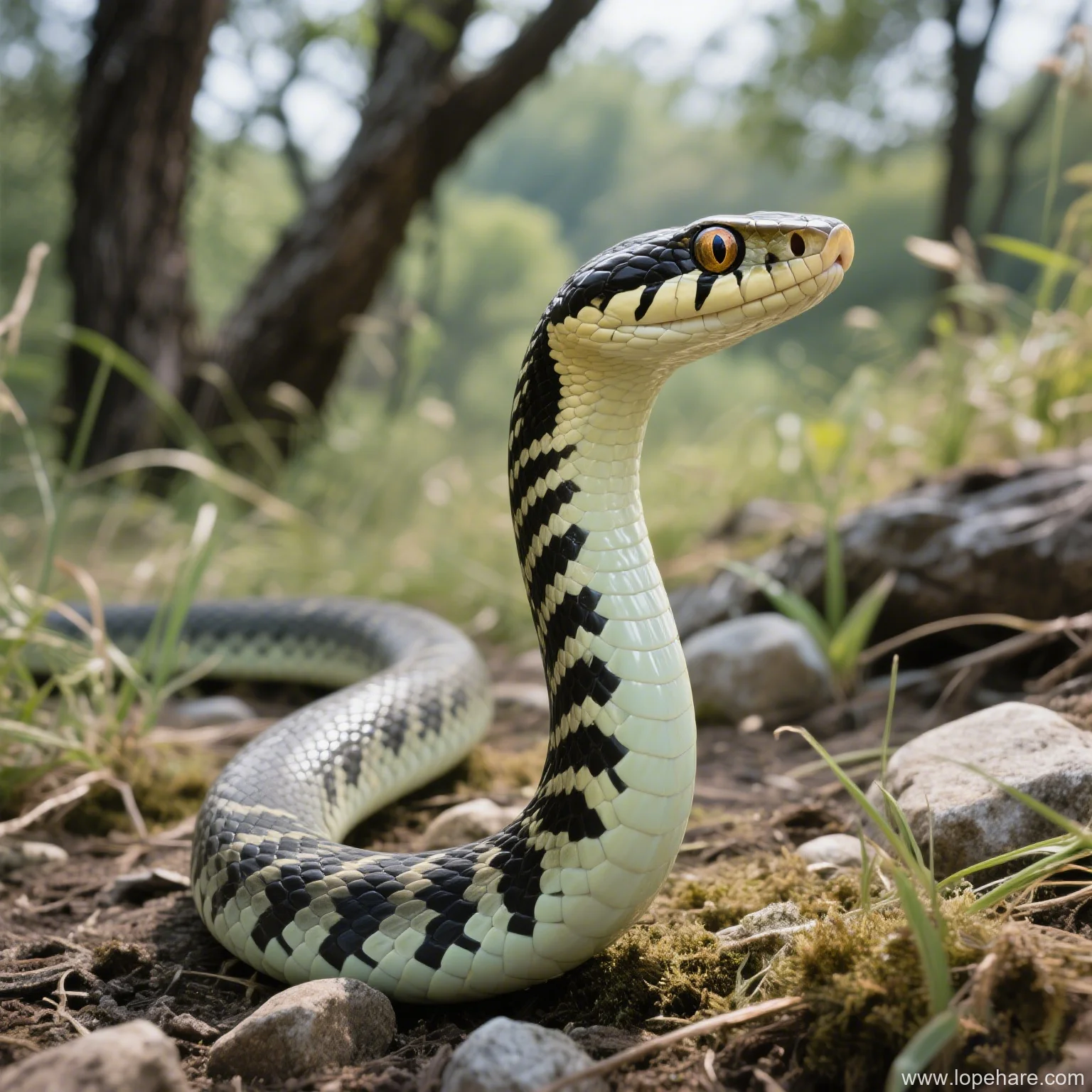
Once breeding is observed, you can separate the pair. The female will require increased food intake to develop eggs. Look for signs of follicular development, which appear as lumps in her lower body. As she gets closer to laying, she will likely shed (a pre-lay shed). This shed signals that eggs are imminent, usually within 1-2 weeks.
Provide a suitable nesting box – a container with moist sphagnum moss or vermiculite where she can safely deposit her eggs. The female needs privacy and the correct humidity in this box.
Common Challenges and Solutions
Breeding isn’t always straightforward. Potential issues include:
- Incompatibility: Sometimes snakes simply don’t get along or show no interest in breeding.
- Egg Binding (Dystocia): A serious, potentially fatal condition where the female is unable to pass her eggs. This requires immediate veterinary intervention. Proper conditioning, hydration, and a good nesting site help reduce this risk.
- Infertile Eggs: Not all eggs will be fertile. Infertile eggs (slugs) are typically yellow and mushy and should be discarded.
- Incubation Issues: Maintaining precise temperature and humidity during incubation is critical for egg development. Fluctuations can lead to egg death or developmental problems.
Investing in reliable incubation equipment, such as a quality incubator with thermostat control and a hygrometer, is crucial. Typical incubation for *Elaphe schrenckii* eggs takes around 50-70 days at temperatures between 78-82°F (25.5-28°C).
Hatchling Care: The Next Generation
Hatchling care is a significant commitment. Once the eggs hatch, the babies will absorb their yolk sacs. They typically have their first shed within 7-10 days of hatching. Only after this first shed should you attempt to feed them. The initial feeding can sometimes be challenging.
- First Meals: Hatchlings start with small prey, usually pinkie mice. Some may require scenting (rubbing the pinkie with a lizard or other preferred prey item) or even assist-feeding if they are reluctant to strike. Be patient; not all hatchlings feed immediately.
- Housing: Each hatchling requires its own small, secure enclosure to prevent cannibalism and monitor feeding and health individually. Simple rack systems with small tubs are common for breeders.
- Monitoring Growth & Health: Regularly weigh and measure hatchlings. Watch for signs of illness, poor feeding response, or shedding problems. Preparing for Elaphe schrenckii hatchling care involves having appropriate-sized feeders readily available and being prepared to troubleshoot feeding issues.

Conclusion: A Rewarding Endeavor
Breeding *Elaphe schrenckii* is a complex but potentially very rewarding experience for the dedicated enthusiast. It requires significant preparation, attention to detail, and a strong commitment to ethical practices and the welfare of the animals. By understanding the natural needs of this species, preparing appropriately, and being ready to face potential challenges, breeders can contribute to the availability of healthy, captive-bred Siberian Rat Snakes for the pet community. As part of the lopehare community, we encourage prospective breeders to do thorough research, connect with experienced keepers, and always prioritize the well-being of their incredible serpentine companions.
Citations:
